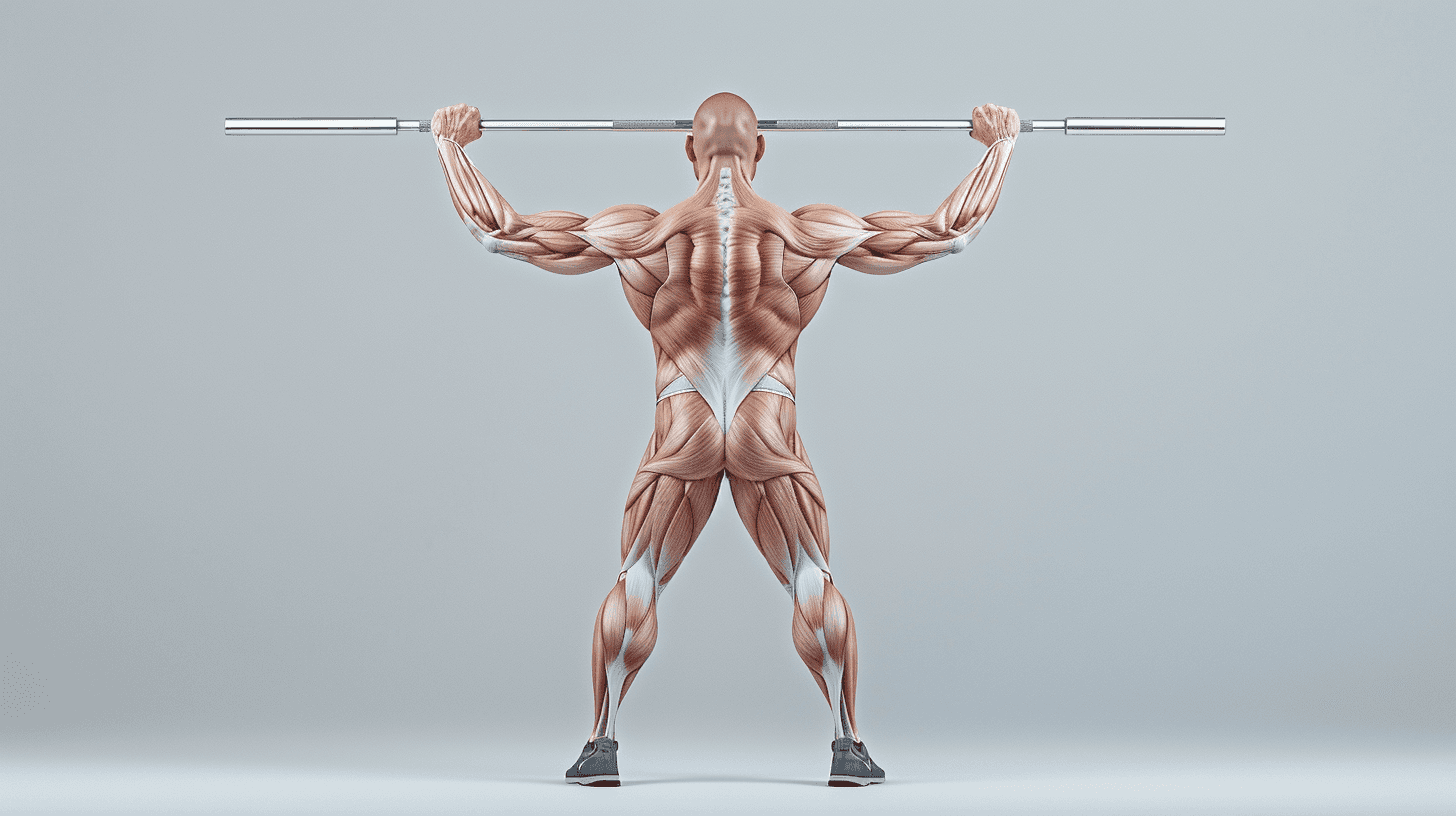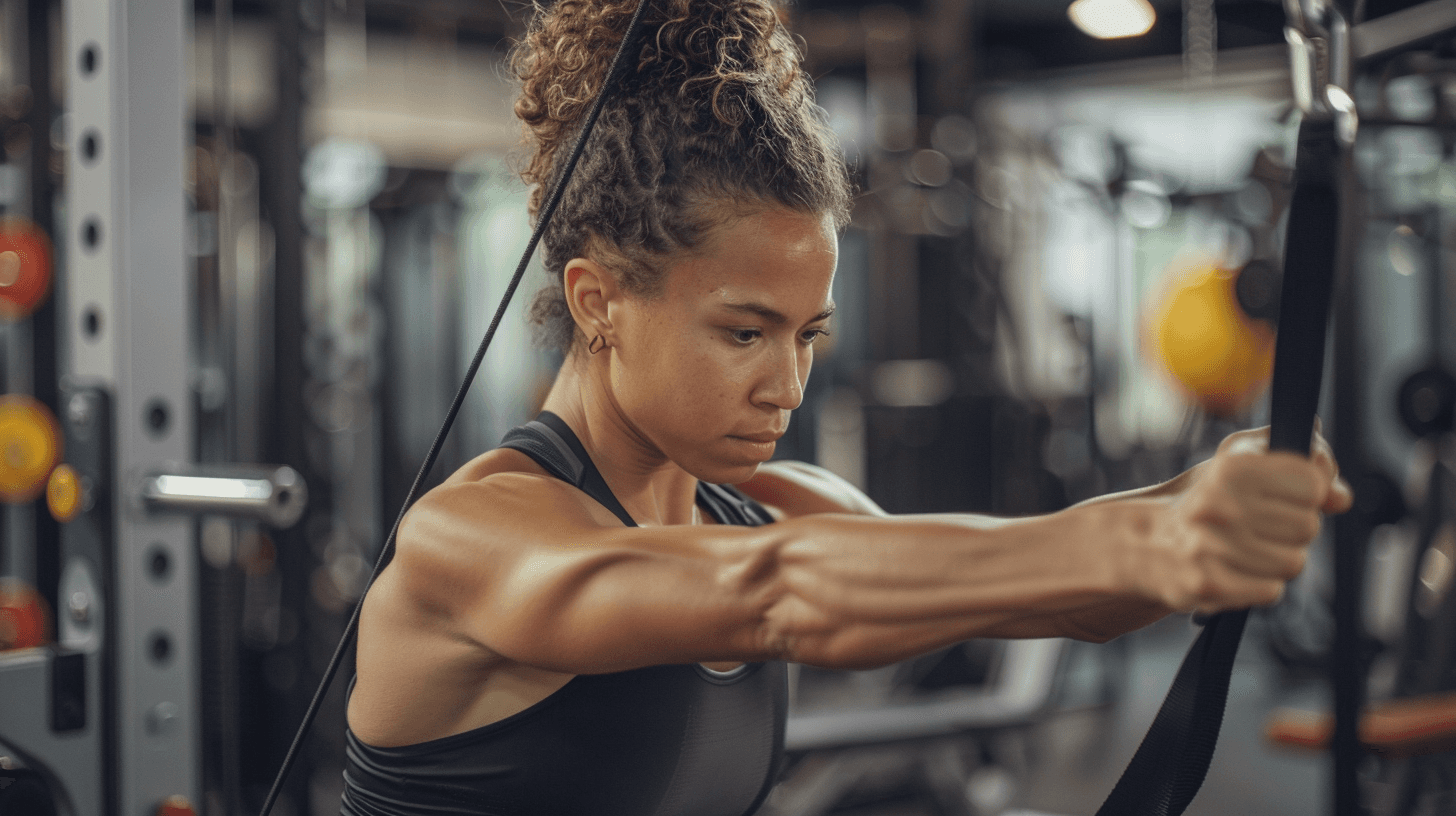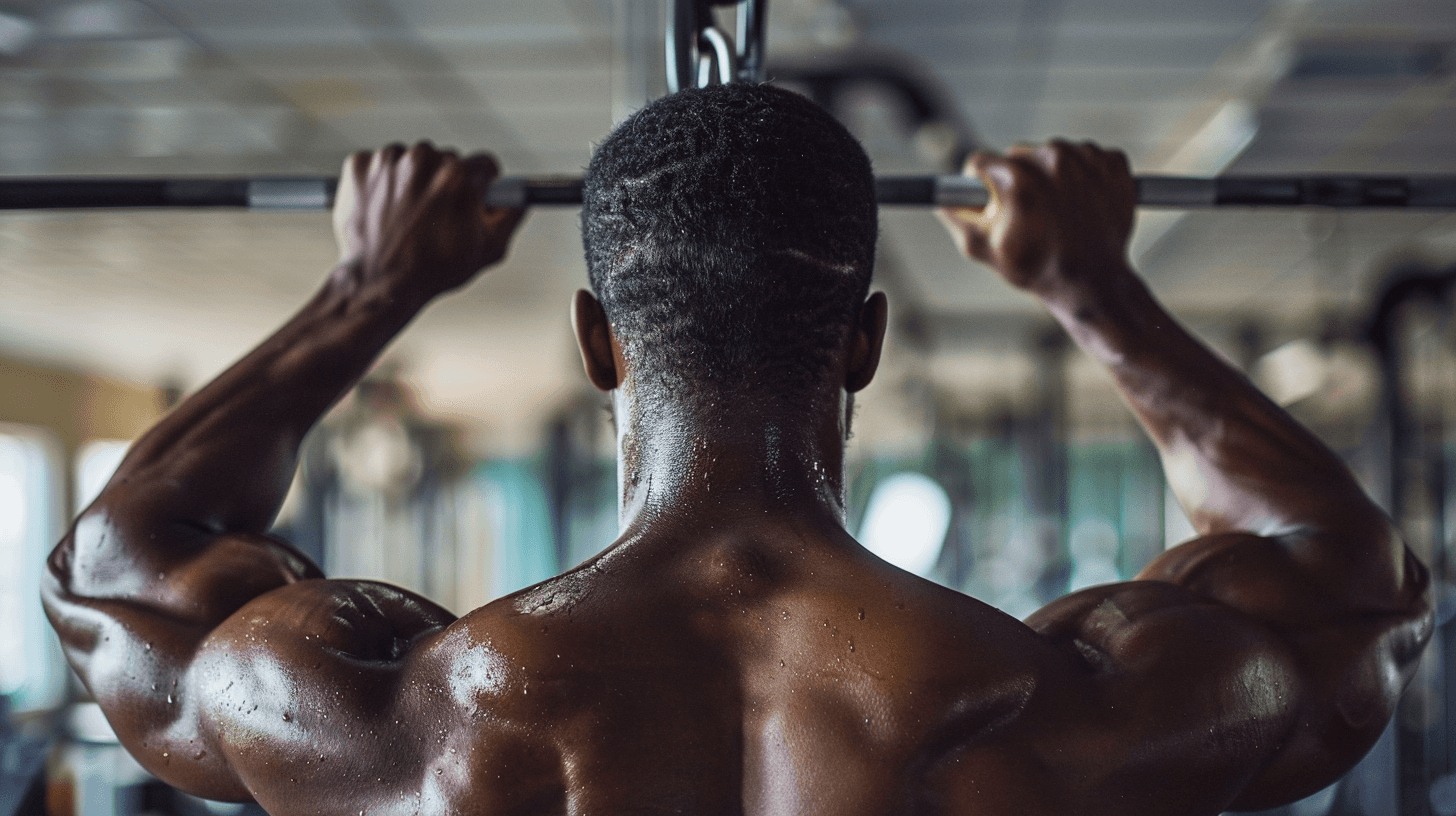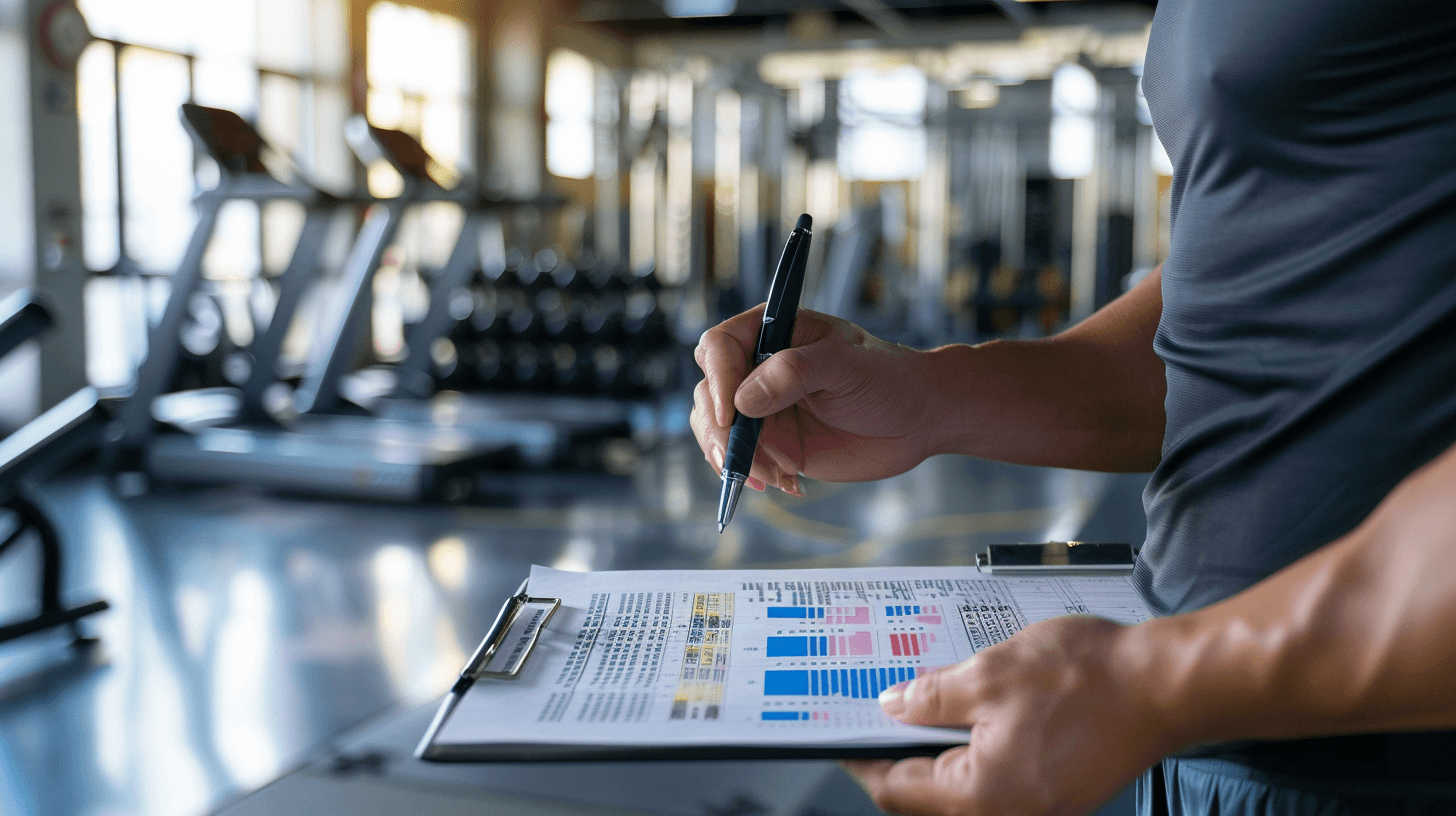Workout
The Ultimate Guide to Pull Day Exercises
Enhance strength and muscle growth with pull day exercises. Learn the best exercises, how to structure your workout, and tips for maximizing results.
Jun 22, 2024



Introduction
For fitness enthusiasts, gym goers, and busy professionals who are serious about their health, understanding and incorporating a variety of workouts into your routine is crucial for achieving a well-rounded fitness regimen. One such integral component is the pull day workout, which focuses on specific muscle groups to ensure balanced muscle development and increased strength. Whether you’re a seasoned athlete or a beginner looking to optimize your workout routine, mastering pull day exercises can significantly enhance your fitness journey.
This guide provides a comprehensive look at pull day exercises, detailing the benefits, key muscle groups targeted, and how to structure an effective pull day workout. We will also include tips for success and address frequently asked questions to ensure you have all the information you need to maximize your results. By the end of this guide, you’ll be equipped with the knowledge and confidence to incorporate pull day workouts into your routine effectively.
Introduction
For fitness enthusiasts, gym goers, and busy professionals who are serious about their health, understanding and incorporating a variety of workouts into your routine is crucial for achieving a well-rounded fitness regimen. One such integral component is the pull day workout, which focuses on specific muscle groups to ensure balanced muscle development and increased strength. Whether you’re a seasoned athlete or a beginner looking to optimize your workout routine, mastering pull day exercises can significantly enhance your fitness journey.
This guide provides a comprehensive look at pull day exercises, detailing the benefits, key muscle groups targeted, and how to structure an effective pull day workout. We will also include tips for success and address frequently asked questions to ensure you have all the information you need to maximize your results. By the end of this guide, you’ll be equipped with the knowledge and confidence to incorporate pull day workouts into your routine effectively.
What is a Pull Day?
A pull day is a workout session dedicated to exercises that involve pulling movements, primarily targeting the back, biceps, and rear deltoids. This concept is a staple in many workout splits, such as the popular push-pull-legs (PPL) routine, which separates workouts into pushing exercises, pulling exercises, and leg exercises.
Understanding Pull Movements

Pull movements are exercises where you pull weight or resistance towards your body. These movements are essential for developing the muscles involved in pulling actions, such as pulling yourself up, rowing, or curling weights. Pull day exercises typically include compound movements that work multiple muscle groups simultaneously, as well as isolation exercises that target specific muscles more intensely.
Importance of Pull Day Workouts
There are many healthy benefits when you incorporate pull-day workouts into your fitness routine. Here are several reasons why you should try Fit SenPai’s comprehensive guide to achieving your fitness goals:

1. Balanced Muscle Development
Pull day exercises target key muscle groups that are often neglected in push-focused routines. By including exercises that engage the back, biceps, and rear deltoids, you ensure a well-rounded workout regimen. This balanced approach helps prevent muscle imbalances, which can lead to poor posture and increased injury risk. A balanced muscle development also enhances overall body symmetry and aesthetics.
2. Enhanced Posture
Strong back muscles are crucial for maintaining good posture. Pull day exercises, such as rows and pull-ups, strengthen the muscles that support your spine and shoulders. Improved posture not only reduces the risk of back and shoulder pain but also contributes to a more confident and upright stance. Good posture is essential for preventing chronic pain and maintaining spinal health.
3. Increased Strength
Pulling exercises build foundational strength essential for other compound movements. Strengthening the muscles involved in pulling actions enhances your ability to perform various physical tasks, from lifting heavy objects to improving performance in sports. This foundational strength supports overall fitness and functional strength, making daily activities easier and more efficient.
4. Injury Prevention
Balanced muscle development reduces the risk of injuries. Overworking certain muscle groups while neglecting others can lead to muscle imbalances, which increase the likelihood of strains and injuries. Pull day workouts promote balanced strength and muscle function, helping to prevent common injuries associated with overuse and imbalance. By ensuring all muscle groups are adequately worked, you can enjoy a safer and more effective training routine.
5. Improved Athletic Performance
Strong back and bicep muscles are crucial for athletic performance in many sports and physical activities. Whether you're a swimmer, climber, or play sports like tennis or basketball, having strong pulling muscles enhances your performance. Pull day exercises improve your ability to generate force and power, essential for various athletic movements.
6. Enhanced Metabolic Rate
Incorporating compound movements that engage large muscle groups can boost your metabolic rate. Exercises like deadlifts and pull-ups require significant energy expenditure, which helps increase calorie burn during and after your workout. This enhanced metabolic rate supports fat loss and overall weight management.
7. Functional Strength
Pull day exercises develop functional strength, which translates to improved performance in everyday activities. Lifting, pulling, and carrying objects become easier as you strengthen the muscles involved in these actions. Functional strength is essential for maintaining independence and quality of life, especially as you age.
8. Variety in Training
Adding pull day workouts to your routine introduces variety, keeping your training sessions interesting and engaging. This variety helps prevent workout boredom and keeps you motivated to stick to your fitness regimen. Different exercises and movements challenge your muscles in new ways, promoting continuous improvement and progress.
9. Mental Benefits
Strength training, including pull day workouts, has been shown to have mental health benefits. It can reduce stress, improve mood, and boost self-esteem. The sense of accomplishment from lifting heavier weights or achieving new exercise milestones contributes to a positive mental outlook.
10. Support for Push Day Exercises
Strengthening the muscles targeted on pull days supports the muscles worked on push days. This balanced approach ensures that all muscle groups are adequately developed, enhancing overall workout performance. A strong back, for example, stabilizes the shoulder joint during pushing exercises, reducing the risk of injury and improving efficiency.
Key Muscle Groups Targeted on Pull Day

1. Back Muscles
The back is composed of several large muscle groups that play crucial roles in upper body strength and stability:
Latissimus Dorsi (Lats): These are the large muscles that run down the sides of your back, essential for pulling motions.
Trapezius (Traps): Located in the upper back, traps are involved in shoulder and neck movements.
Rhomboids: These small muscles between your shoulder blades help retract the scapula.
Erector Spinae: Running along your spine, these muscles help with back extension and posture.
2. Biceps
The biceps are the primary muscles in the upper arm responsible for elbow flexion:
Biceps Brachii: The most well-known part of the biceps, consisting of two heads (long and short) that flex the elbow and supinate the forearm.
Brachialis: Located underneath the biceps brachii, this muscle also aids in elbow flexion.
Brachioradialis: A forearm muscle that assists in flexing the elbow, especially during hammer curls.
3. Rear Deltoids
Part of the shoulder complex, the rear deltoids are crucial for shoulder stability and movements that pull the arm backward:
Rear Deltoids: These muscles at the back of your shoulder help in transverse extension and horizontal abduction of the arm.
Best Pull Day Exercises
Deadlifts
Muscles Worked: Entire posterior chain including back, glutes, and hamstrings.
How to Perform:
Stand with feet hip-width apart, barbell over midfoot.
Bend at hips and knees to grasp the bar with a shoulder-width grip.
Lift the bar by extending hips and knees, keeping the back straight.
Lower the bar back to the floor with control.
Pull-Ups
Muscles Worked: Latissimus dorsi, biceps, and upper back.
How to Perform:
Grasp a pull-up bar with palms facing away, hands shoulder-width apart.
Pull your body up until your chin is above the bar.
Lower yourself back to the starting position with control.
Bent Over Rows
Muscles Worked: Upper and middle back, biceps.
How to Perform:
Stand with feet shoulder-width apart, holding a barbell.
Bend at the hips, keeping your back straight.
Pull the barbell towards your torso, squeezing your shoulder blades together.
Lower the barbell back to the starting position.
Single-Arm Dumbbell Rows
Muscles Worked: Lats, rhomboids, biceps.
How to Perform:
Place one knee and hand on a bench, holding a dumbbell in the opposite hand.
Pull the dumbbell towards your hip, keeping your back straight.
Lower the dumbbell back to the starting position.
Face Pulls
Muscles Worked: Rear deltoids, upper back.
How to Perform:
Attach a rope handle to a high pulley.
Grasp the rope with both hands, palms facing down.
Pull the rope towards your face, elbows flaring out.
Return to the starting position with control.
Barbell Curls
Muscles Worked: Biceps brachii.
How to Perform:
Stand with feet shoulder-width apart, holding a barbell with an underhand grip.
Curl the barbell towards your shoulders, keeping elbows close to your body.
Lower the barbell back to the starting position.
Hammer Curls
Muscles Worked: Brachialis, brachioradialis, biceps brachii.
How to Perform:
Stand with feet shoulder-width apart, holding dumbbells at your sides.
Curl the dumbbells towards your shoulders, palms facing each other.
Lower the dumbbells back to the starting position.
Structuring Your Pull Day Workout

Warm-Up
Begin with a 5-10 minute warm-up to increase blood flow and prepare your muscles. Dynamic stretches and light cardio are great options.
Workout Routine
Deadlifts: 4 sets of 6-8 reps
Pull-Ups: 4 sets of 6-8 reps
Bent Over Rows: 4 sets of 8-10 reps
Single-Arm Dumbbell Rows: 3 sets of 10-12 reps each side
Face Pulls: 3 sets of 12-15 reps
Barbell Curls: 3 sets of 10-12 reps
Hammer Curls: 3 sets of 10-12 reps
Cool Down
Finish with a 5-10 minute cool down, including static stretches focusing on the muscles worked during your pull day.
Tips for an Effective Pull Day
Focus on Form: Proper form is crucial to avoid injuries and ensure effective muscle engagement.
Progressive Overload: Gradually increase the weight or resistance to continually challenge your muscles.
Rest and Recovery: Allow adequate recovery time between workouts to promote muscle growth and prevent overtraining.
Balanced Nutrition: Ensure your diet supports your workout routine, with adequate protein for muscle repair and carbs for energy.
What is a Pull Day?
A pull day is a workout session dedicated to exercises that involve pulling movements, primarily targeting the back, biceps, and rear deltoids. This concept is a staple in many workout splits, such as the popular push-pull-legs (PPL) routine, which separates workouts into pushing exercises, pulling exercises, and leg exercises.
Understanding Pull Movements

Pull movements are exercises where you pull weight or resistance towards your body. These movements are essential for developing the muscles involved in pulling actions, such as pulling yourself up, rowing, or curling weights. Pull day exercises typically include compound movements that work multiple muscle groups simultaneously, as well as isolation exercises that target specific muscles more intensely.
Importance of Pull Day Workouts
There are many healthy benefits when you incorporate pull-day workouts into your fitness routine. Here are several reasons why you should try Fit SenPai’s comprehensive guide to achieving your fitness goals:

1. Balanced Muscle Development
Pull day exercises target key muscle groups that are often neglected in push-focused routines. By including exercises that engage the back, biceps, and rear deltoids, you ensure a well-rounded workout regimen. This balanced approach helps prevent muscle imbalances, which can lead to poor posture and increased injury risk. A balanced muscle development also enhances overall body symmetry and aesthetics.
2. Enhanced Posture
Strong back muscles are crucial for maintaining good posture. Pull day exercises, such as rows and pull-ups, strengthen the muscles that support your spine and shoulders. Improved posture not only reduces the risk of back and shoulder pain but also contributes to a more confident and upright stance. Good posture is essential for preventing chronic pain and maintaining spinal health.
3. Increased Strength
Pulling exercises build foundational strength essential for other compound movements. Strengthening the muscles involved in pulling actions enhances your ability to perform various physical tasks, from lifting heavy objects to improving performance in sports. This foundational strength supports overall fitness and functional strength, making daily activities easier and more efficient.
4. Injury Prevention
Balanced muscle development reduces the risk of injuries. Overworking certain muscle groups while neglecting others can lead to muscle imbalances, which increase the likelihood of strains and injuries. Pull day workouts promote balanced strength and muscle function, helping to prevent common injuries associated with overuse and imbalance. By ensuring all muscle groups are adequately worked, you can enjoy a safer and more effective training routine.
5. Improved Athletic Performance
Strong back and bicep muscles are crucial for athletic performance in many sports and physical activities. Whether you're a swimmer, climber, or play sports like tennis or basketball, having strong pulling muscles enhances your performance. Pull day exercises improve your ability to generate force and power, essential for various athletic movements.
6. Enhanced Metabolic Rate
Incorporating compound movements that engage large muscle groups can boost your metabolic rate. Exercises like deadlifts and pull-ups require significant energy expenditure, which helps increase calorie burn during and after your workout. This enhanced metabolic rate supports fat loss and overall weight management.
7. Functional Strength
Pull day exercises develop functional strength, which translates to improved performance in everyday activities. Lifting, pulling, and carrying objects become easier as you strengthen the muscles involved in these actions. Functional strength is essential for maintaining independence and quality of life, especially as you age.
8. Variety in Training
Adding pull day workouts to your routine introduces variety, keeping your training sessions interesting and engaging. This variety helps prevent workout boredom and keeps you motivated to stick to your fitness regimen. Different exercises and movements challenge your muscles in new ways, promoting continuous improvement and progress.
9. Mental Benefits
Strength training, including pull day workouts, has been shown to have mental health benefits. It can reduce stress, improve mood, and boost self-esteem. The sense of accomplishment from lifting heavier weights or achieving new exercise milestones contributes to a positive mental outlook.
10. Support for Push Day Exercises
Strengthening the muscles targeted on pull days supports the muscles worked on push days. This balanced approach ensures that all muscle groups are adequately developed, enhancing overall workout performance. A strong back, for example, stabilizes the shoulder joint during pushing exercises, reducing the risk of injury and improving efficiency.
Key Muscle Groups Targeted on Pull Day

1. Back Muscles
The back is composed of several large muscle groups that play crucial roles in upper body strength and stability:
Latissimus Dorsi (Lats): These are the large muscles that run down the sides of your back, essential for pulling motions.
Trapezius (Traps): Located in the upper back, traps are involved in shoulder and neck movements.
Rhomboids: These small muscles between your shoulder blades help retract the scapula.
Erector Spinae: Running along your spine, these muscles help with back extension and posture.
2. Biceps
The biceps are the primary muscles in the upper arm responsible for elbow flexion:
Biceps Brachii: The most well-known part of the biceps, consisting of two heads (long and short) that flex the elbow and supinate the forearm.
Brachialis: Located underneath the biceps brachii, this muscle also aids in elbow flexion.
Brachioradialis: A forearm muscle that assists in flexing the elbow, especially during hammer curls.
3. Rear Deltoids
Part of the shoulder complex, the rear deltoids are crucial for shoulder stability and movements that pull the arm backward:
Rear Deltoids: These muscles at the back of your shoulder help in transverse extension and horizontal abduction of the arm.
Best Pull Day Exercises
Deadlifts
Muscles Worked: Entire posterior chain including back, glutes, and hamstrings.
How to Perform:
Stand with feet hip-width apart, barbell over midfoot.
Bend at hips and knees to grasp the bar with a shoulder-width grip.
Lift the bar by extending hips and knees, keeping the back straight.
Lower the bar back to the floor with control.
Pull-Ups
Muscles Worked: Latissimus dorsi, biceps, and upper back.
How to Perform:
Grasp a pull-up bar with palms facing away, hands shoulder-width apart.
Pull your body up until your chin is above the bar.
Lower yourself back to the starting position with control.
Bent Over Rows
Muscles Worked: Upper and middle back, biceps.
How to Perform:
Stand with feet shoulder-width apart, holding a barbell.
Bend at the hips, keeping your back straight.
Pull the barbell towards your torso, squeezing your shoulder blades together.
Lower the barbell back to the starting position.
Single-Arm Dumbbell Rows
Muscles Worked: Lats, rhomboids, biceps.
How to Perform:
Place one knee and hand on a bench, holding a dumbbell in the opposite hand.
Pull the dumbbell towards your hip, keeping your back straight.
Lower the dumbbell back to the starting position.
Face Pulls
Muscles Worked: Rear deltoids, upper back.
How to Perform:
Attach a rope handle to a high pulley.
Grasp the rope with both hands, palms facing down.
Pull the rope towards your face, elbows flaring out.
Return to the starting position with control.
Barbell Curls
Muscles Worked: Biceps brachii.
How to Perform:
Stand with feet shoulder-width apart, holding a barbell with an underhand grip.
Curl the barbell towards your shoulders, keeping elbows close to your body.
Lower the barbell back to the starting position.
Hammer Curls
Muscles Worked: Brachialis, brachioradialis, biceps brachii.
How to Perform:
Stand with feet shoulder-width apart, holding dumbbells at your sides.
Curl the dumbbells towards your shoulders, palms facing each other.
Lower the dumbbells back to the starting position.
Structuring Your Pull Day Workout

Warm-Up
Begin with a 5-10 minute warm-up to increase blood flow and prepare your muscles. Dynamic stretches and light cardio are great options.
Workout Routine
Deadlifts: 4 sets of 6-8 reps
Pull-Ups: 4 sets of 6-8 reps
Bent Over Rows: 4 sets of 8-10 reps
Single-Arm Dumbbell Rows: 3 sets of 10-12 reps each side
Face Pulls: 3 sets of 12-15 reps
Barbell Curls: 3 sets of 10-12 reps
Hammer Curls: 3 sets of 10-12 reps
Cool Down
Finish with a 5-10 minute cool down, including static stretches focusing on the muscles worked during your pull day.
Tips for an Effective Pull Day
Focus on Form: Proper form is crucial to avoid injuries and ensure effective muscle engagement.
Progressive Overload: Gradually increase the weight or resistance to continually challenge your muscles.
Rest and Recovery: Allow adequate recovery time between workouts to promote muscle growth and prevent overtraining.
Balanced Nutrition: Ensure your diet supports your workout routine, with adequate protein for muscle repair and carbs for energy.

Your all-in-one fitness plan is just one click away
Try it free for 7 days. Cancel anytime.

Your all-in-one fitness plan is just one click away
Try it free for 7 days. Cancel anytime.

Your all-in-one fitness plan is just one click away
Try it free for 7 days.
Cancel anytime.
Conclusion
Incorporating pull day exercises into your workout routine is crucial for achieving balanced muscle development and overall strength. Pull day workouts, which focus on the back, biceps, and rear deltoids, help enhance muscle balance, improve posture, and prevent injuries. As you integrate pull day exercises into your routine, it's essential to stay motivated and track your progress. A well-structured workout plan, tailored to your specific goals, can make a significant difference in your results.
Ready to take your fitness to the next level? Explore Fit Senpai’s customized workout and meal plans designed to meet your unique needs. With expert guidance and personalized plans, you can stay on track, achieve your health goals, and enjoy a balanced, effective fitness regimen. Start your journey with Fit Senpai today and experience the benefits of a well-rounded workout plan.
Conclusion
Incorporating pull day exercises into your workout routine is crucial for achieving balanced muscle development and overall strength. Pull day workouts, which focus on the back, biceps, and rear deltoids, help enhance muscle balance, improve posture, and prevent injuries. As you integrate pull day exercises into your routine, it's essential to stay motivated and track your progress. A well-structured workout plan, tailored to your specific goals, can make a significant difference in your results.
Ready to take your fitness to the next level? Explore Fit Senpai’s customized workout and meal plans designed to meet your unique needs. With expert guidance and personalized plans, you can stay on track, achieve your health goals, and enjoy a balanced, effective fitness regimen. Start your journey with Fit Senpai today and experience the benefits of a well-rounded workout plan.
Conclusion
Incorporating pull day exercises into your workout routine is crucial for achieving balanced muscle development and overall strength. Pull day workouts, which focus on the back, biceps, and rear deltoids, help enhance muscle balance, improve posture, and prevent injuries. As you integrate pull day exercises into your routine, it's essential to stay motivated and track your progress. A well-structured workout plan, tailored to your specific goals, can make a significant difference in your results.
Ready to take your fitness to the next level? Explore Fit Senpai’s customized workout and meal plans designed to meet your unique needs. With expert guidance and personalized plans, you can stay on track, achieve your health goals, and enjoy a balanced, effective fitness regimen. Start your journey with Fit Senpai today and experience the benefits of a well-rounded workout plan.
FAQ
What is a pull day workout?
A pull day workout focuses on exercises that target the back, biceps, and rear deltoids, involving pulling movements.How often should I do pull day workouts?
Typically, pull day workouts are done once or twice a week, depending on your overall workout split and goals.Can beginners do pull day exercises?
Yes, beginners can start with basic pull exercises and gradually increase the intensity as they build strength.What equipment do I need for a pull day workout?
Common equipment includes barbells, dumbbells, resistance bands, and a pull-up bar.How long should a pull day workout last?
A pull day workout typically lasts between 45-60 minutes, including warm-up and cool down.Should I do cardio on pull days?
You can include light cardio on pull days, but avoid high-intensity cardio that may interfere with muscle recovery.Can I do pull day exercises at home?
Yes, many pull day exercises can be done at home with minimal equipment, like resistance bands and dumbbells.How do I avoid injuries during pull day workouts?
Focus on proper form, start with lighter weights, and gradually increase resistance. Always warm up and cool down properly.What are some alternatives to pull-ups?
Alternatives include lat pull-downs, assisted pull-ups, and inverted rows.How do I know if my pull day workout is effective?
Track your progress through strength gains, muscle growth, and overall improvement in your performance.
FAQ
What is a pull day workout?
A pull day workout focuses on exercises that target the back, biceps, and rear deltoids, involving pulling movements.How often should I do pull day workouts?
Typically, pull day workouts are done once or twice a week, depending on your overall workout split and goals.Can beginners do pull day exercises?
Yes, beginners can start with basic pull exercises and gradually increase the intensity as they build strength.What equipment do I need for a pull day workout?
Common equipment includes barbells, dumbbells, resistance bands, and a pull-up bar.How long should a pull day workout last?
A pull day workout typically lasts between 45-60 minutes, including warm-up and cool down.Should I do cardio on pull days?
You can include light cardio on pull days, but avoid high-intensity cardio that may interfere with muscle recovery.Can I do pull day exercises at home?
Yes, many pull day exercises can be done at home with minimal equipment, like resistance bands and dumbbells.How do I avoid injuries during pull day workouts?
Focus on proper form, start with lighter weights, and gradually increase resistance. Always warm up and cool down properly.What are some alternatives to pull-ups?
Alternatives include lat pull-downs, assisted pull-ups, and inverted rows.How do I know if my pull day workout is effective?
Track your progress through strength gains, muscle growth, and overall improvement in your performance.
FAQ
What is a pull day workout?
A pull day workout focuses on exercises that target the back, biceps, and rear deltoids, involving pulling movements.How often should I do pull day workouts?
Typically, pull day workouts are done once or twice a week, depending on your overall workout split and goals.Can beginners do pull day exercises?
Yes, beginners can start with basic pull exercises and gradually increase the intensity as they build strength.What equipment do I need for a pull day workout?
Common equipment includes barbells, dumbbells, resistance bands, and a pull-up bar.How long should a pull day workout last?
A pull day workout typically lasts between 45-60 minutes, including warm-up and cool down.Should I do cardio on pull days?
You can include light cardio on pull days, but avoid high-intensity cardio that may interfere with muscle recovery.Can I do pull day exercises at home?
Yes, many pull day exercises can be done at home with minimal equipment, like resistance bands and dumbbells.How do I avoid injuries during pull day workouts?
Focus on proper form, start with lighter weights, and gradually increase resistance. Always warm up and cool down properly.What are some alternatives to pull-ups?
Alternatives include lat pull-downs, assisted pull-ups, and inverted rows.How do I know if my pull day workout is effective?
Track your progress through strength gains, muscle growth, and overall improvement in your performance.
You may also want to read this:
You may also want to read this:



Push Pull Legs Workout – A Balanced Workout Plan That Works
Build muscle with the Push-Pull-Legs (PPL) workout split. A balanced routine for strength and recovery that’s popular among gym-goers for results.



Achieve Muscle Balance with an Upper and Lower Split Program
Maximize gym sessions with an upper-lower split for strength and balance. Get a custom workout plan to achieve your fitness goals!



Get Maximum Gains with the Ultimate 5-Day Split Workout Plan
Build muscle fast with this 5-day split workout plan. Learn key exercises, progressive overload tips, and recovery strategies to maximize gains
Your all-in-one fitness plan is just one click away
Try it free for 7 days. Cancel anytime.
Your all-in-one fitness plan is just one click away
Try it free for 7 days. Cancel anytime.
Your all-in-one fitness plan is just one click away
Try it free for 7 days. Cancel anytime.




